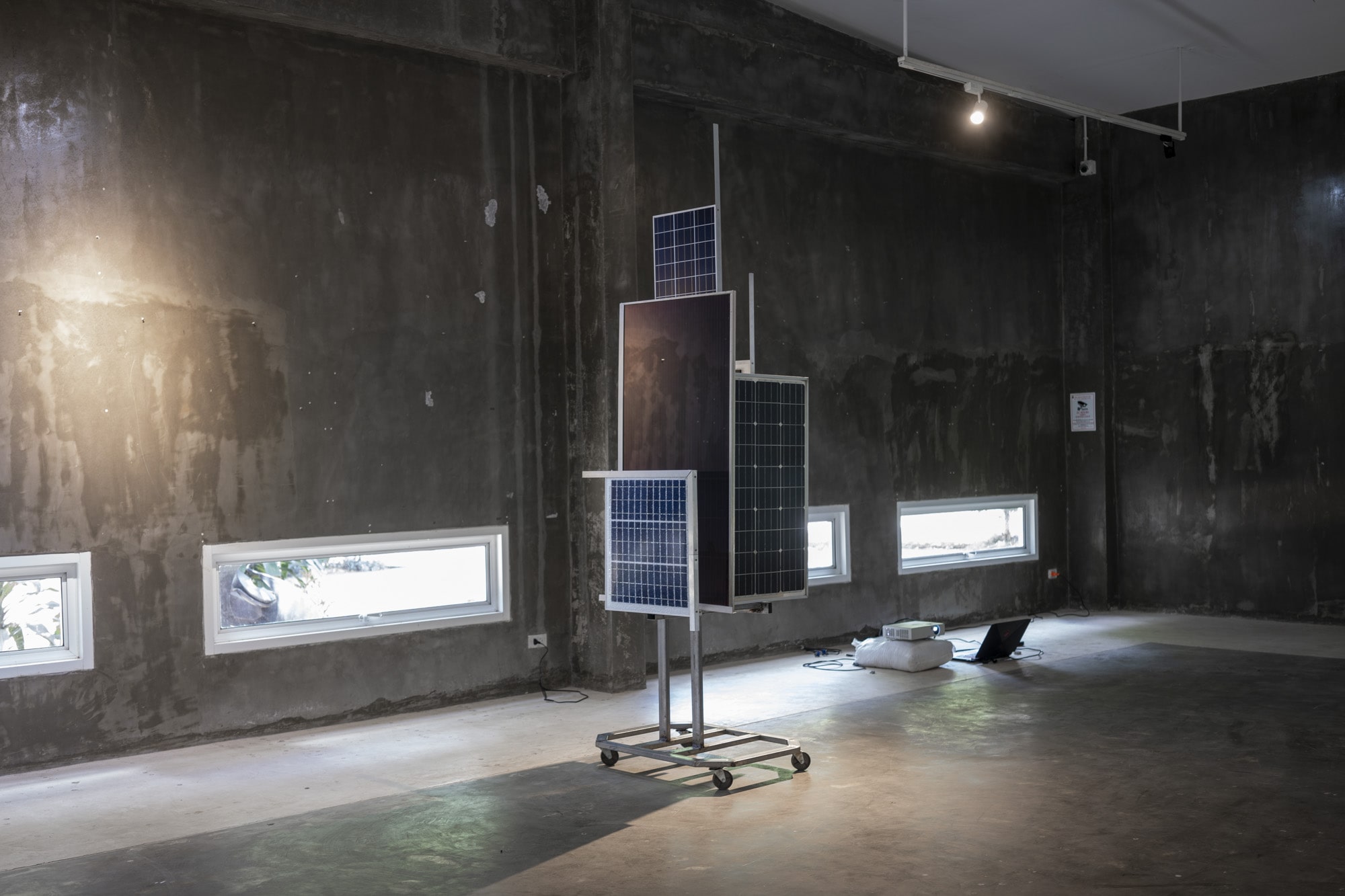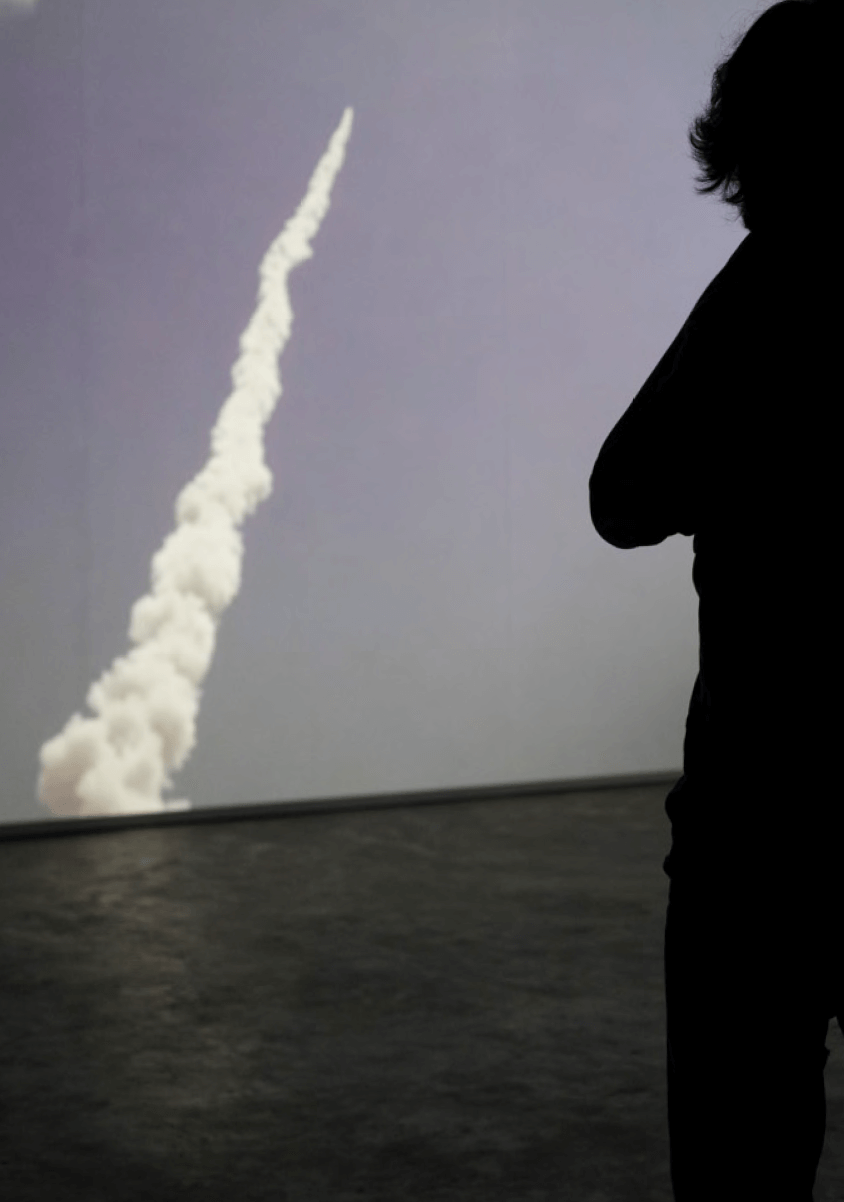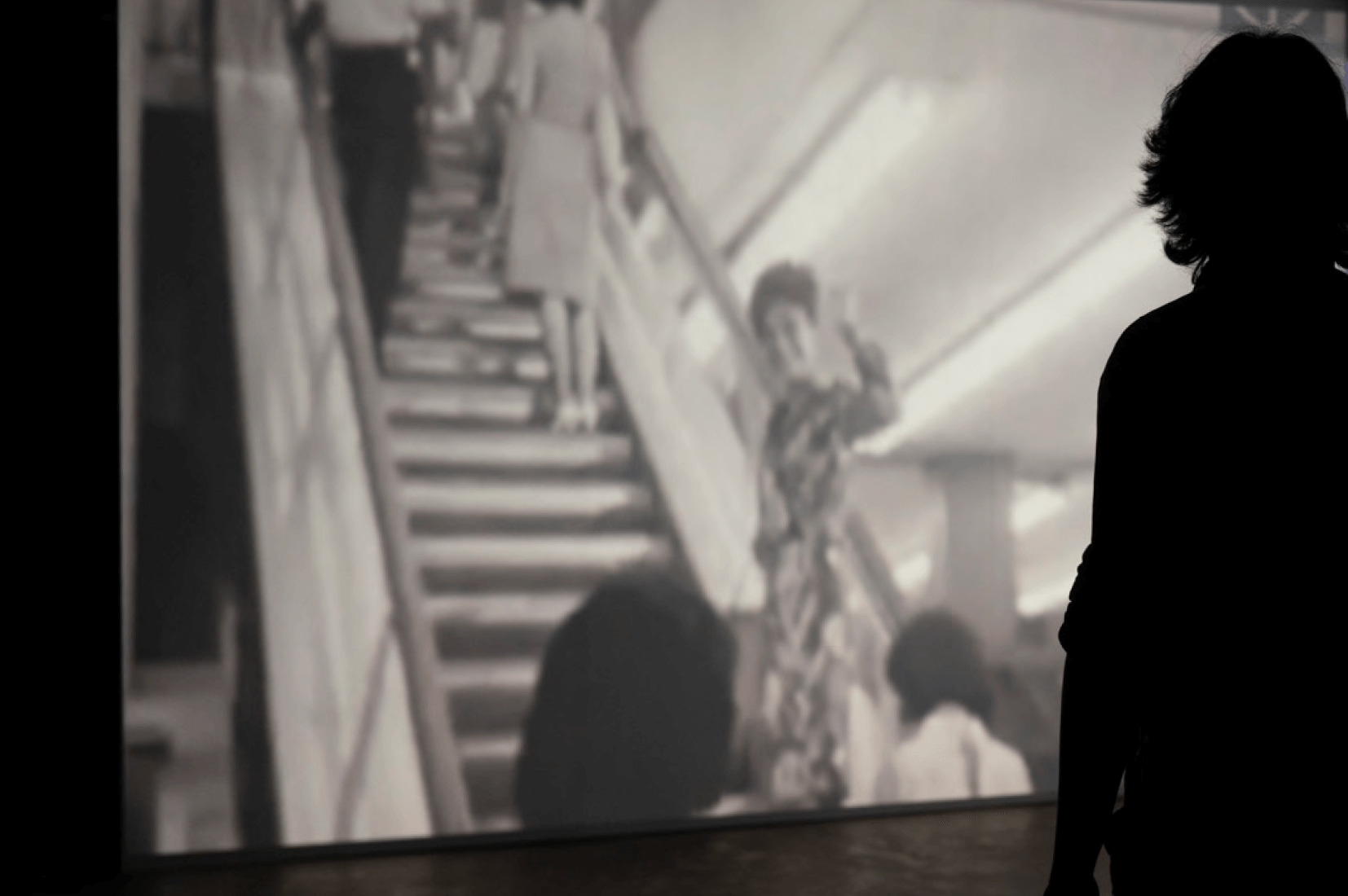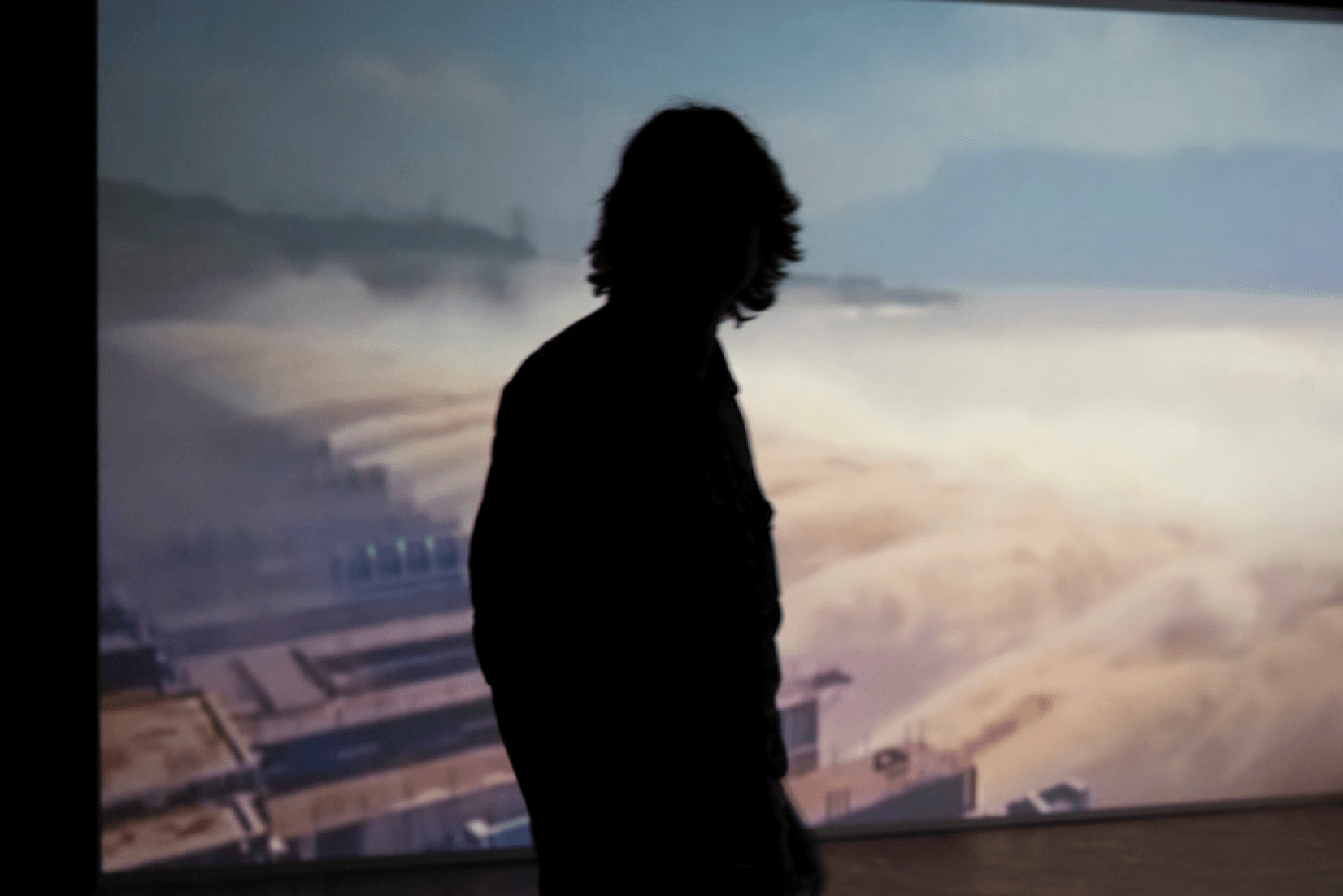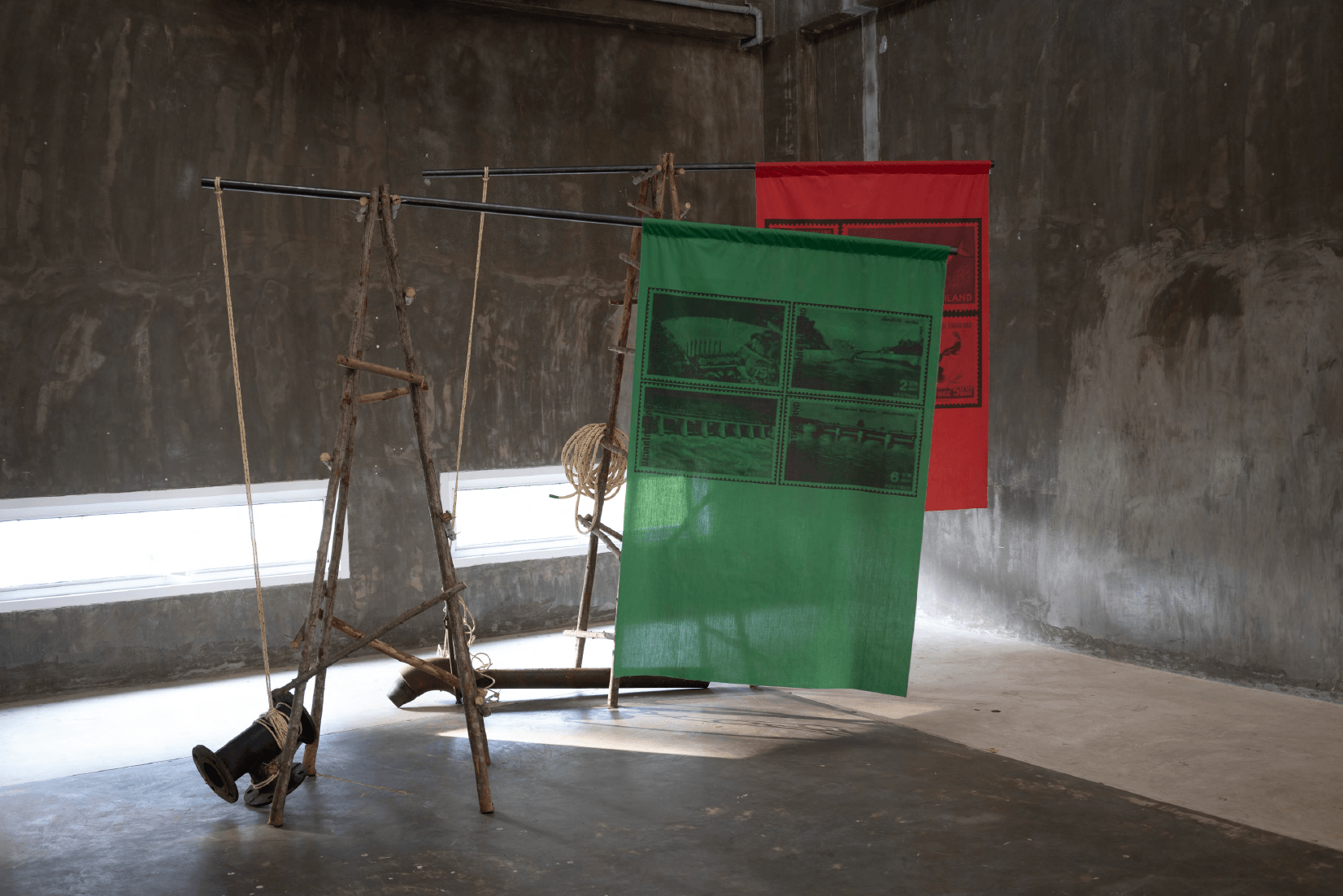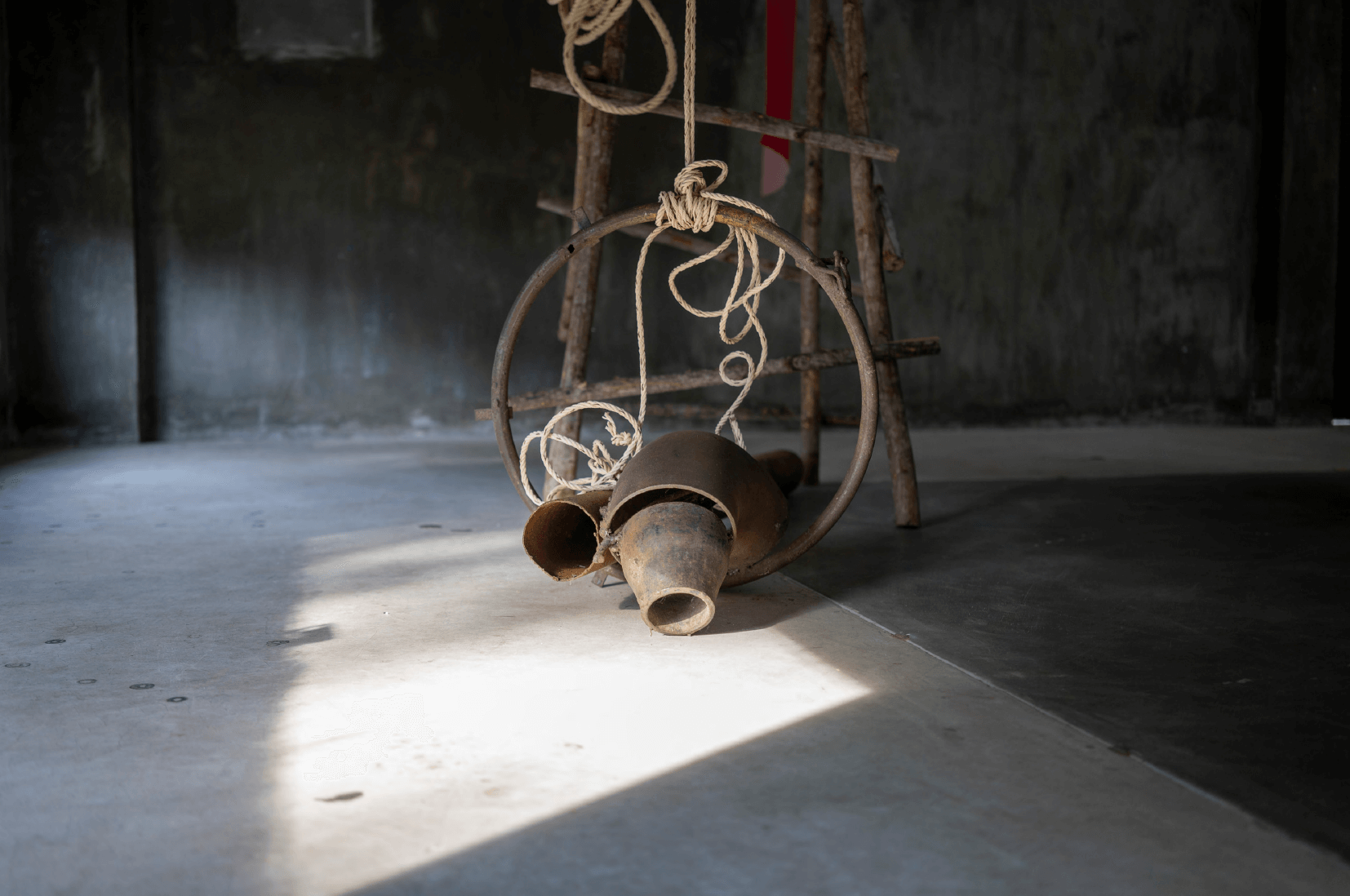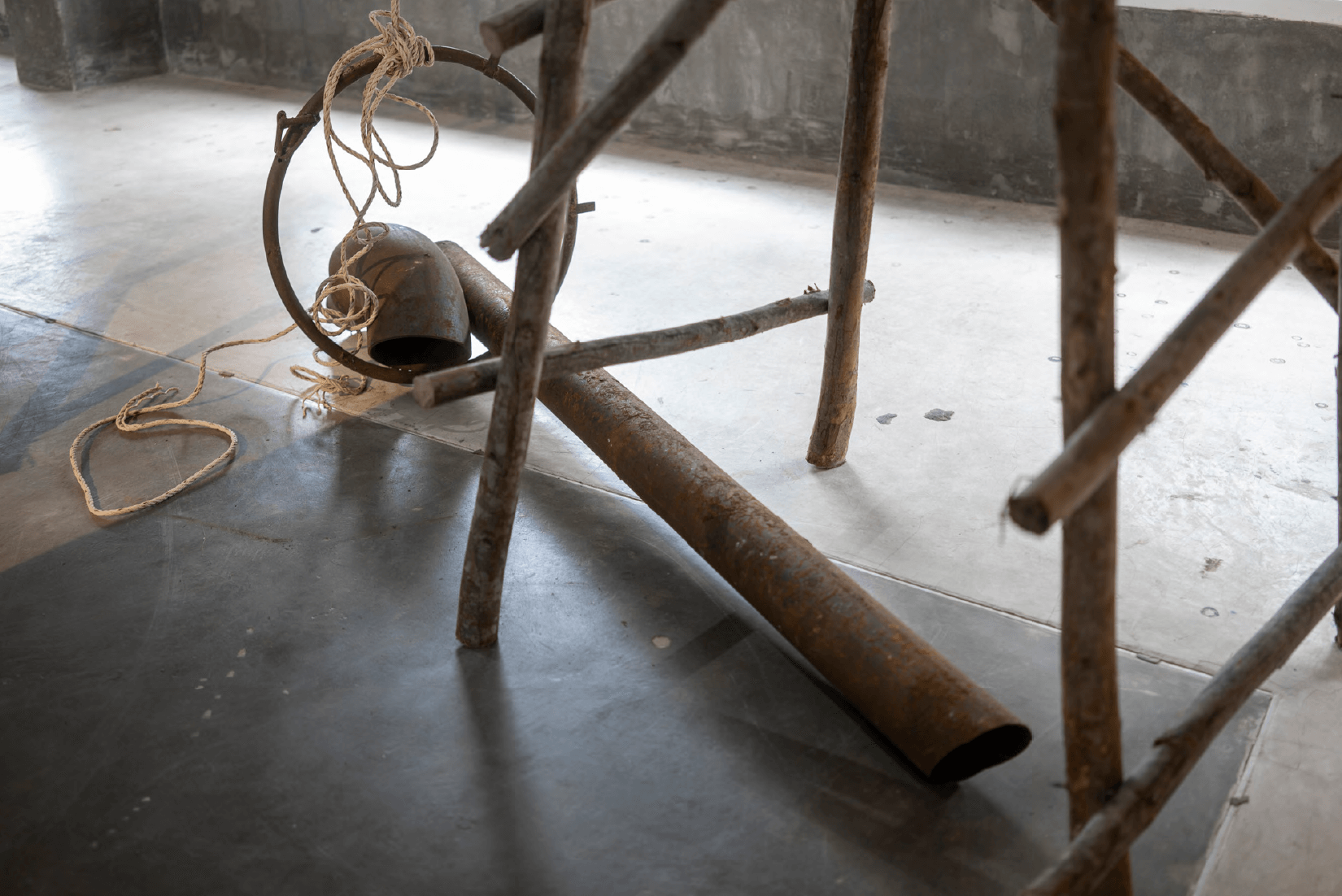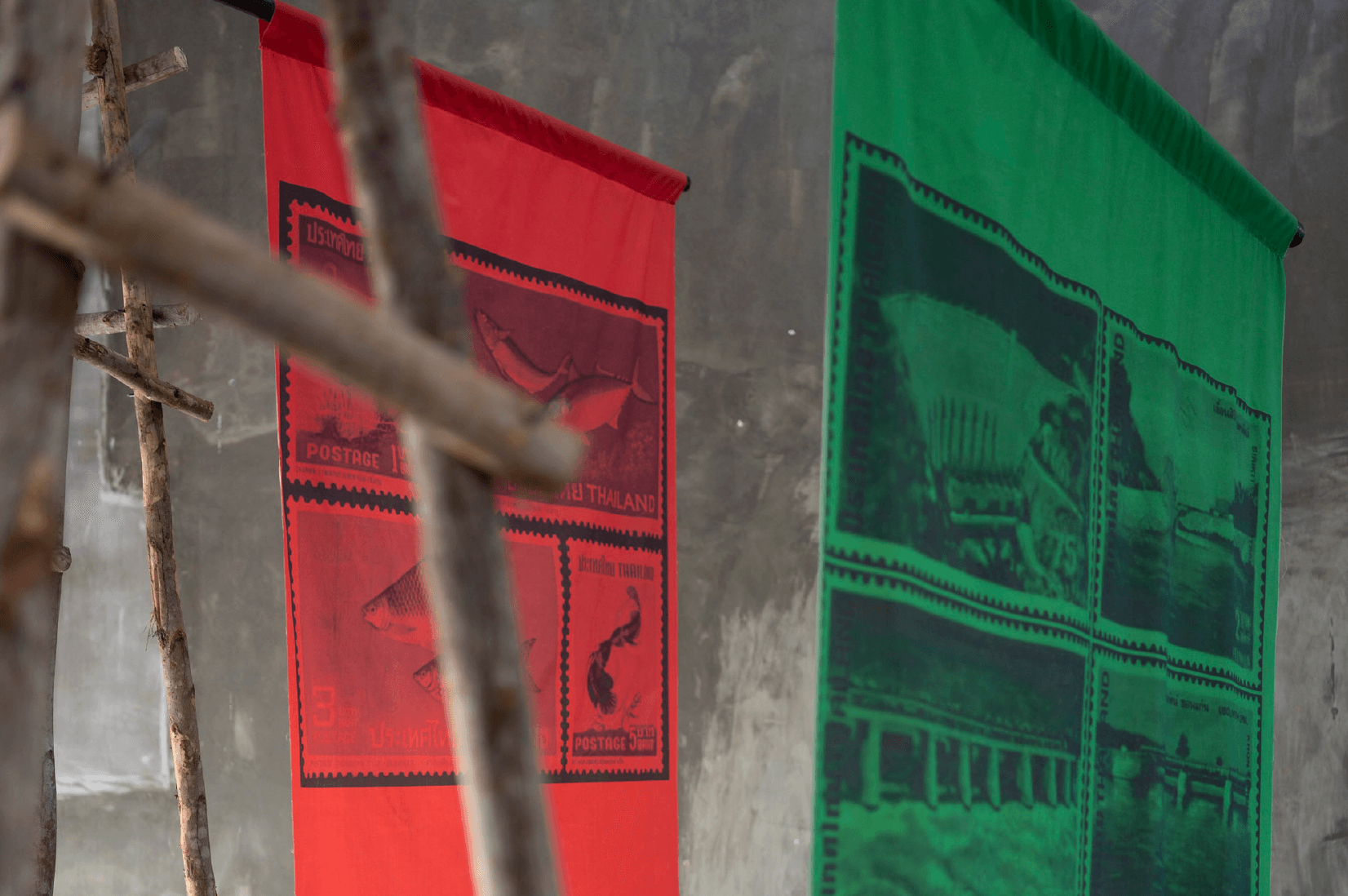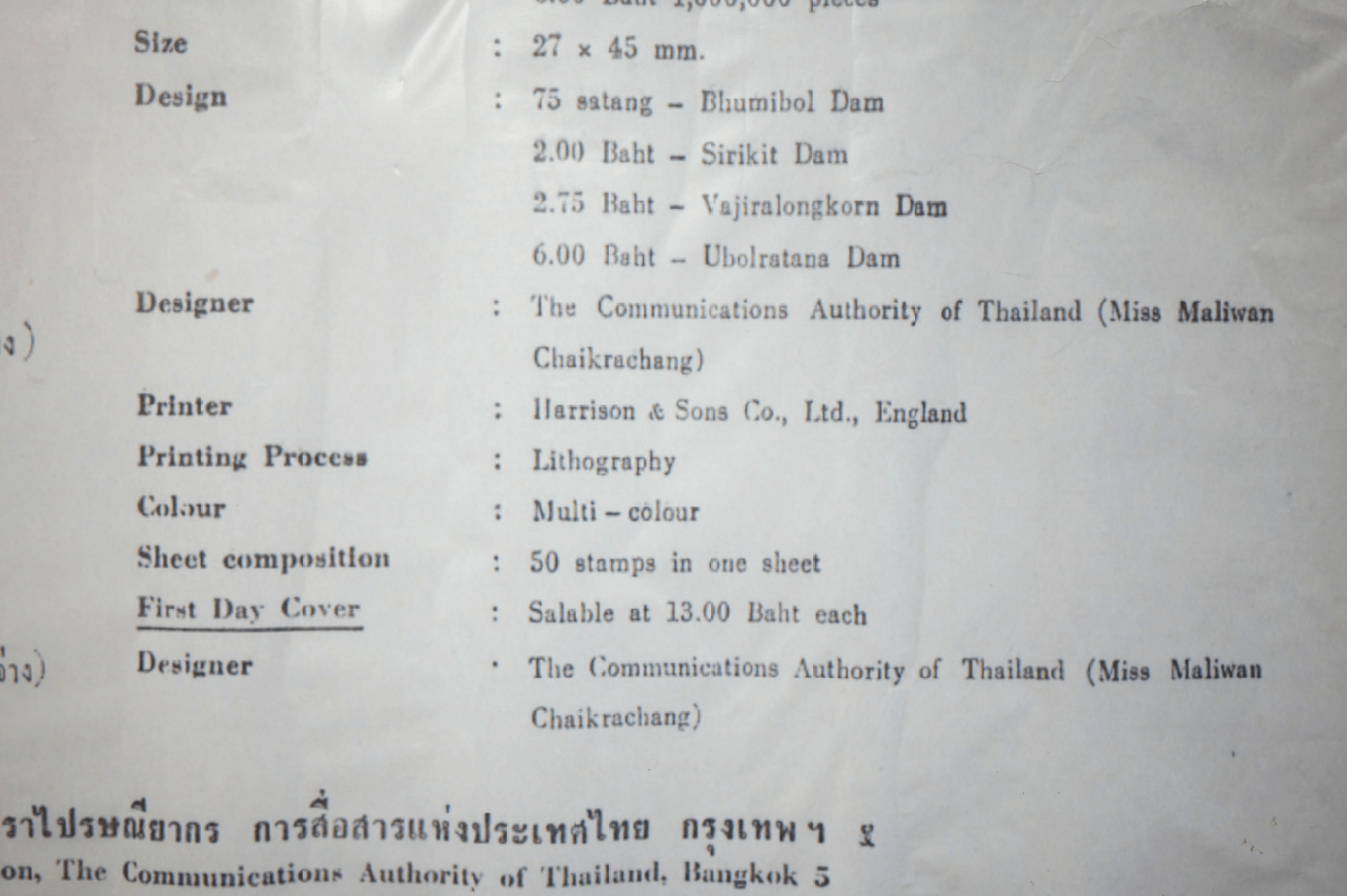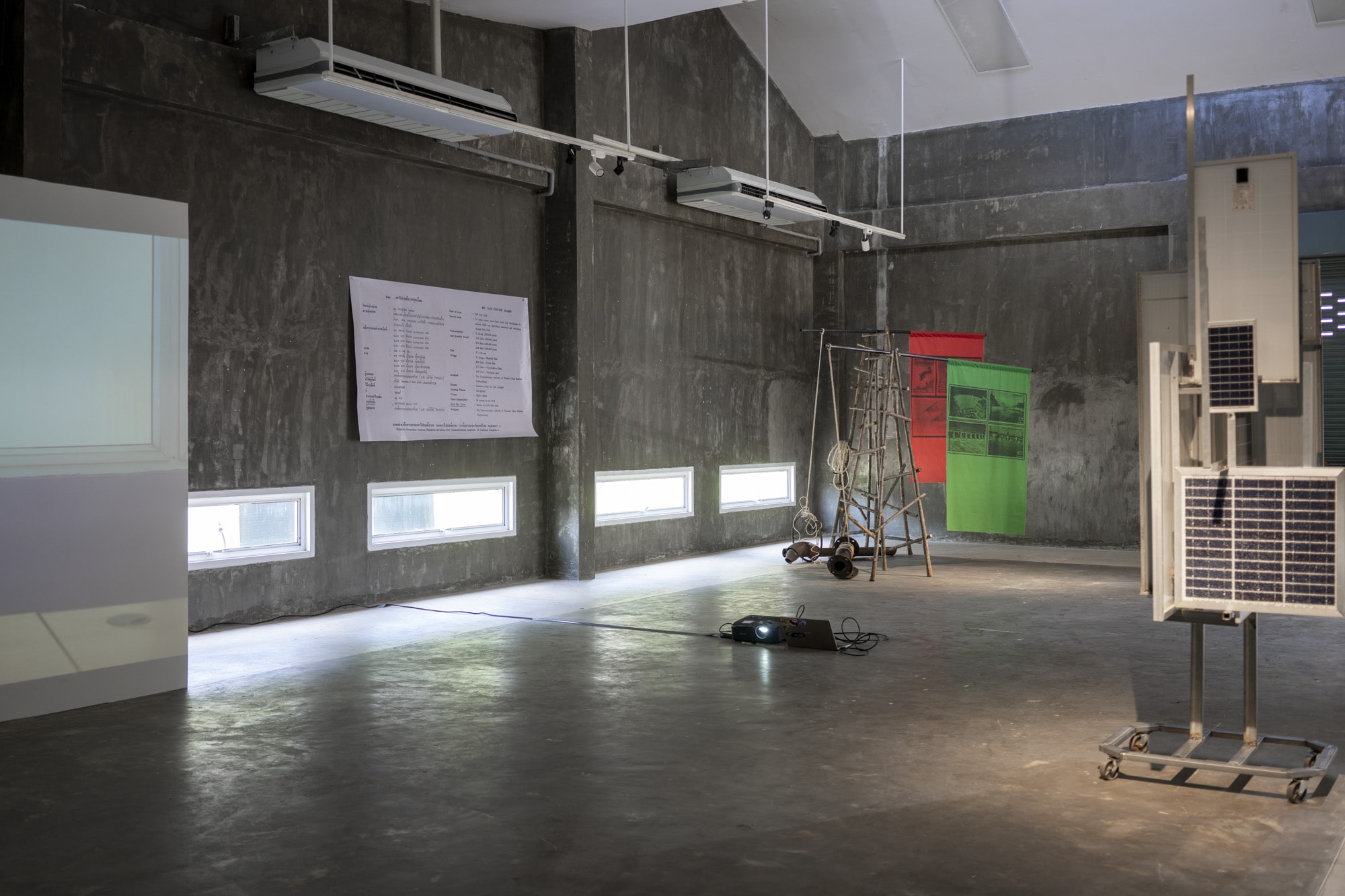A Study in Deception (2022) is a collection of artworks that are concerned with the recent history of development of the dam project in the North East of Thailand, and the current issue of “Green Capitalism”. The project is an attempt to research the relationship between the visuality of the dominant systems, marketing tactics, and other techniques of propaganda that have been extensively produced since the Cold War era in Thailand, when the region of Isan was seen as a target for development discourse. Through interview, public footage and other found material, the works aim to excavate past, present, and future truths, as well as attempting to reveal ongoing modes of countervisuality to a system that capitalizes on all that lives.
How to Greenwash a Disaster, 2022
Found material, water based ink on fabric, 107x167 cm
An installation created from a series of found postage stamps, designed in 1968 by the Communications Authority of Thailand to celebrate the country’s most important dams. According to an accompanying note by a high-ranking official, those stamps were created to make known the benefit that the dams would bring to farming and irrigation, while also protecting from flooding.
The fabric used in the work is the same low-cost material villagers used to protest the government. The stamps of aquatic species are a reminder of the ecosystem destruction caused by the dams.
Importance of Thai Dams, 2022
Two channel video installation with sound, 28 minutes
Through interview, public footage and other found material, (importance of thai dams) not only showcase part of the artist’s research material but, on the left screen, it sheds light on the government’s visual techniques of persuasion and the history of oppression associated with the dams, as well as the local practices of resistance to this process. Those images intertwine with footage of the social and environmental chaos affecting the region. On the right screen, an interview with a local environmental expert articulates the key facts and warnings associated with large water management projects in Isan.
Shapeshifter, 2022
Solar panels, steel, 230x80x100 cm
A sculpture created using both used and newly purchased solar panels. A recent proposal by the Thai government outlines a major economic investment in a series of “floating solar farms” to be placed on the surface of some of the country’s largest dams, a project positioned as the ideal geo-engineering solution to provide clean energy for Thailand’s new carbon neutrality goals without affecting the environment. The object presents itself as an enigmatic figure, perhaps hinting at the form of a human body. The study of semiotic and storytelling describes the archetype of the Shapeshifter as a very changeable character, difficult to read. Eco Modernists promise a green development through technological innovation, however the work suggests we look with a critical eye at the misleading image of a “Good Anthropocene”.
The project was realised with the support of Project Khontemporary, International Artist in Residence Khon Kaen.
